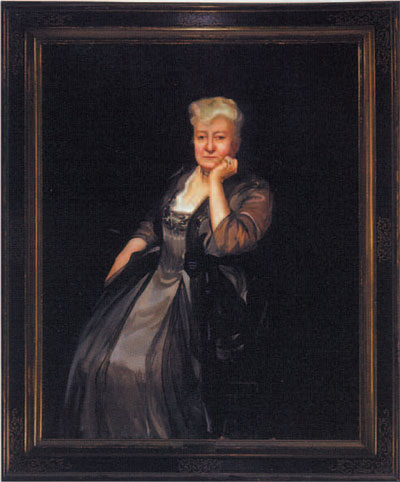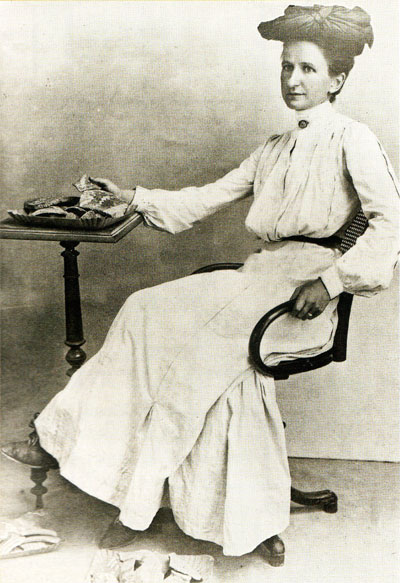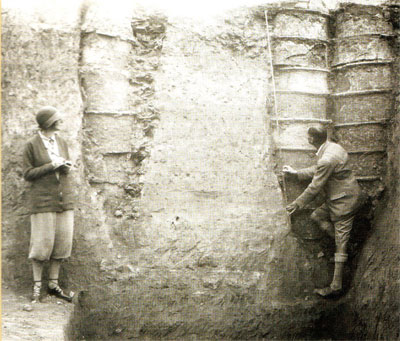


A portrait of Sara Yorke Stevenson (1847–1921) hangs in the Penn Museum Archives, a tribute to this dynamic woman’s crucial role in the Museum’s history. The first Curator of the Egyptian and Mediterranean Sections and the first woman to receive an honorary doctorate from Penn (in 1894), she would later serve the Museum as Secretary, and finally, as its fifth and only female President from 1904–1905. Even after she resigned, her career continued, beginning with her appointment as Curator at the Pennsylvania Museum, now the Philadelphia Museum of Art, and later as columnist and literary editor of Philadelphia’s Public Ledger.
After her death in 1921, friends and colleagues from several Philadelphia clubs honored her lifelong contributions to science and to the city. Their recollections of her character highlight the contemporary significance of a woman attaining such credentials. Hampton L. Carson, speaking on behalf of the American Philosophical Society, recalled the “peculiar order” of her mind, with “masculine qualities as well as feminine… She did not lose her womanly qualities because of her ability to argue logically and philosophically with the most learned of men.” Langdon Warner of the Pennsylvania Museum summarized her influence: “If women today find no difficulty in being recognized as scholars, and if their counsel is demanded in Museums, it is due to Mrs. Stevenson in a far greater measure than our casual generation will ever know.
Stevenson’s illustrious career as an archaeologist never involved fieldwork, perhaps a reflection of the contemporary expectations of women; nevertheless, her ubiquitous influence extended into the field. At a meeting of the Archaeological Institute of America (AIA) in 1900, Stevenson heard a recent Smith College graduate, Miss Harriet Boyd (later Harriet Boyd Hawes), report on her research in Crete. Under Stevenson’s arrangements, the Museum collaborated in sending Boyd on her next expedition to Greece, where she excavated at Gournia, a site which would yield a wealth of information on the daily lives of Cretans in the Bronze Age. Her remarkable success and unlikely status as a woman supervising men in the field contributed to a favorable reception from the press. The French newspaper Journal des Savants praised “la libre et hardie Américaine” for “le féminisme intelligent.” Another journalist described her “strictly feminine” charm of manner unaltered by the nature of “the masculine work.” She was invited to lecture on Gournia to ten regional branches of the AIA, becoming the first woman to speak before the Institute in this capacity.
Harriet Boyd Hawes’s prominence as an acclaimed archaeologist was exceptional—not all contemporary archaeologists accepted a female presence in the field. Concerns about women traveling for and working on expeditions were not uncommon through several following decades. In 1926, Museum Director George Byron Gordon questioned the appropriateness of women working in the field in written correspondence with Sir Leonard Woolley, who was excavating at Ur. Gordon had received reports that were primarily concerned with the presence at Ur of Mrs. Katharine Keeling, a widow in her 30s, and he worried about the potential for bad press. He wrote, “I have very grave doubts which amount to a conviction about the wisdom of having any volunteer assistants on the expedition.” Woolley dismissed Gordon’s concern, responding that he appreciated any free contribution of useful work, and that her influence kept the site workers “up to standard.” Whether or not the reports were founded is impossible to know—Mrs. Keeling remarried and became Mrs. Woolley.
